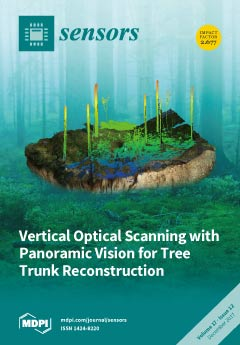Ultrasensitive room temperature real-time NO
2 sensors are highly desirable due to potential threats on environmental security and personal respiratory. Traditional NO
2 gas sensors with highly operated temperatures (200–600 °C) and limited reversibility are mainly constructed from semiconducting oxide-deposited ceramic tubes or
[...] Read more.
Ultrasensitive room temperature real-time NO
2 sensors are highly desirable due to potential threats on environmental security and personal respiratory. Traditional NO
2 gas sensors with highly operated temperatures (200–600 °C) and limited reversibility are mainly constructed from semiconducting oxide-deposited ceramic tubes or inter-finger probes. Herein, we report the functionalized graphene network film sensors assembled on an electrospun three-dimensional (3D) nanonetwork skeleton for ultrasensitive NO
2 sensing. The functional 3D scaffold was prepared by electrospinning interconnected polyacrylonitrile (PAN) nanofibers onto a nylon window screen to provide a 3D nanonetwork skeleton. Then, the sulfophenyl-functionalized reduced graphene oxide (SFRGO) was assembled on the electrospun 3D nanonetwork skeleton to form SFRGO network films. The assembled functionalized graphene network film sensors exhibit excellent NO
2 sensing performance (10 ppb to 20 ppm) at room temperature, reliable reversibility, good selectivity, and better sensing cycle stability. These improvements can be ascribed to the functionalization of graphene with electron-withdrawing sulfophenyl groups, the high surface-to-volume ratio, and the effective sensing channels from SFRGO wrapping onto the interconnected 3D scaffold. The SFRGO network-sensing film has the advantages of simple preparation, low cost, good processability, and ultrasensitive NO
2 sensing, all advantages that can be utilized for potential integration into smart windows and wearable electronic devices for real-time household gas sensors.
Full article






